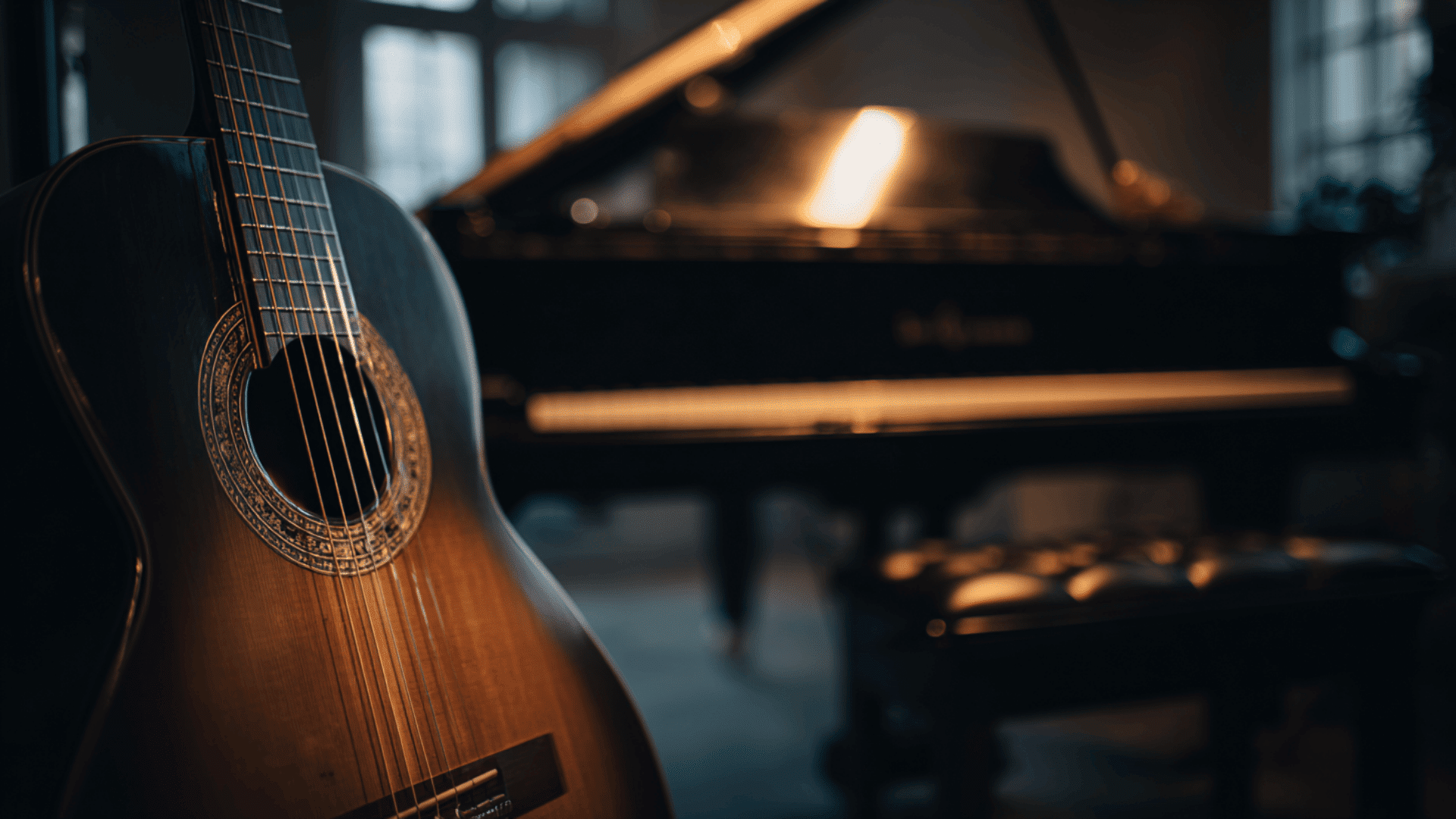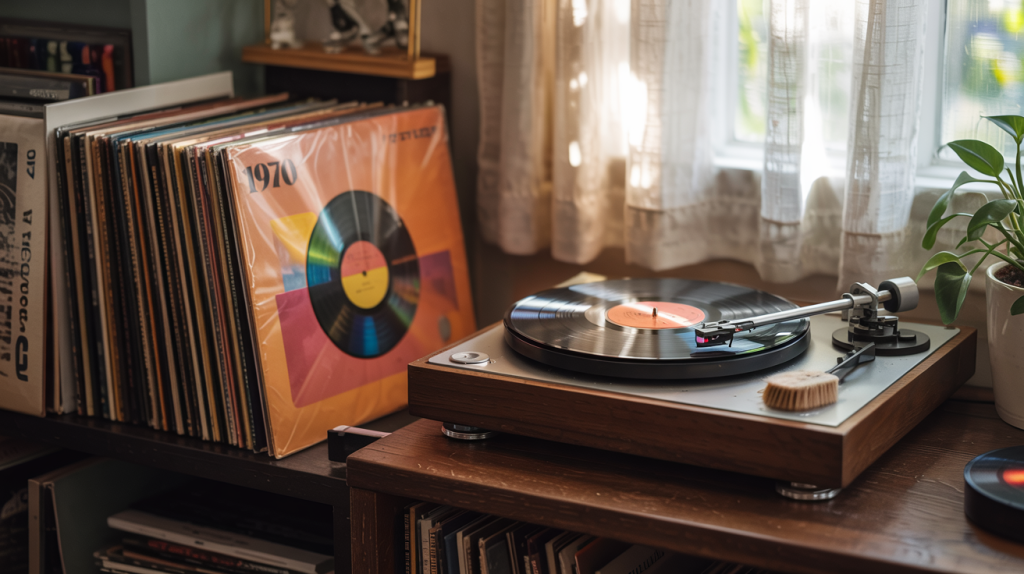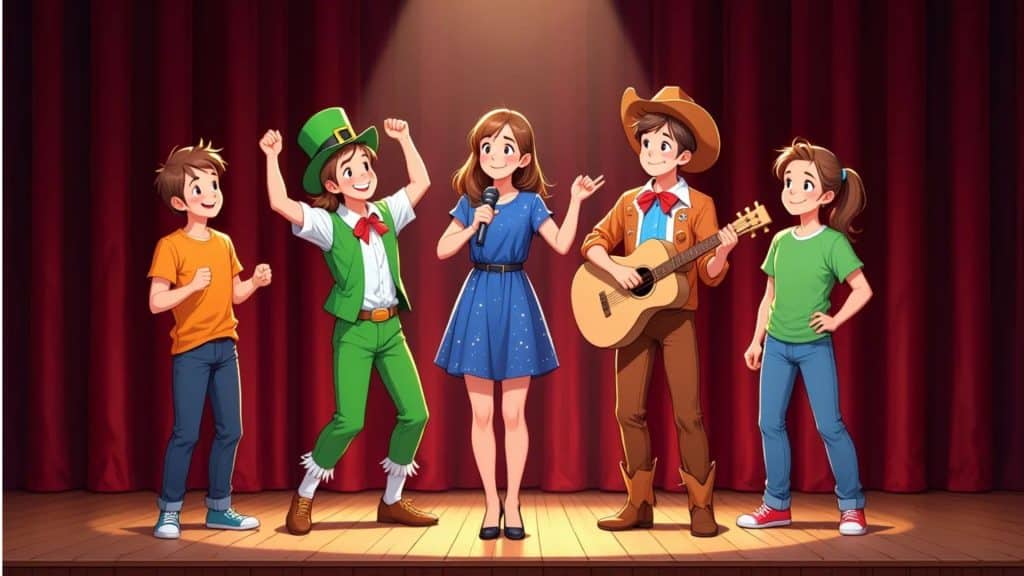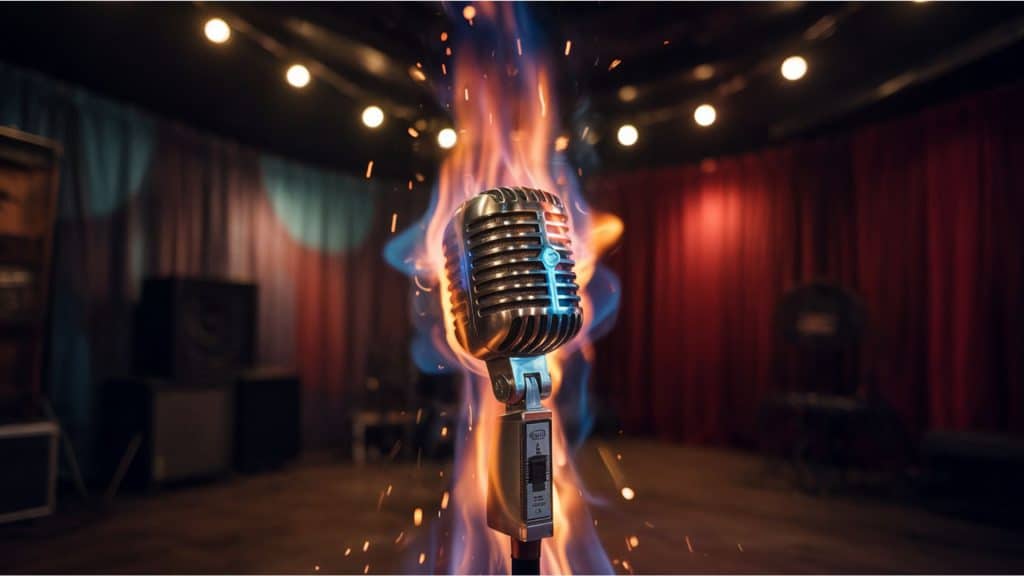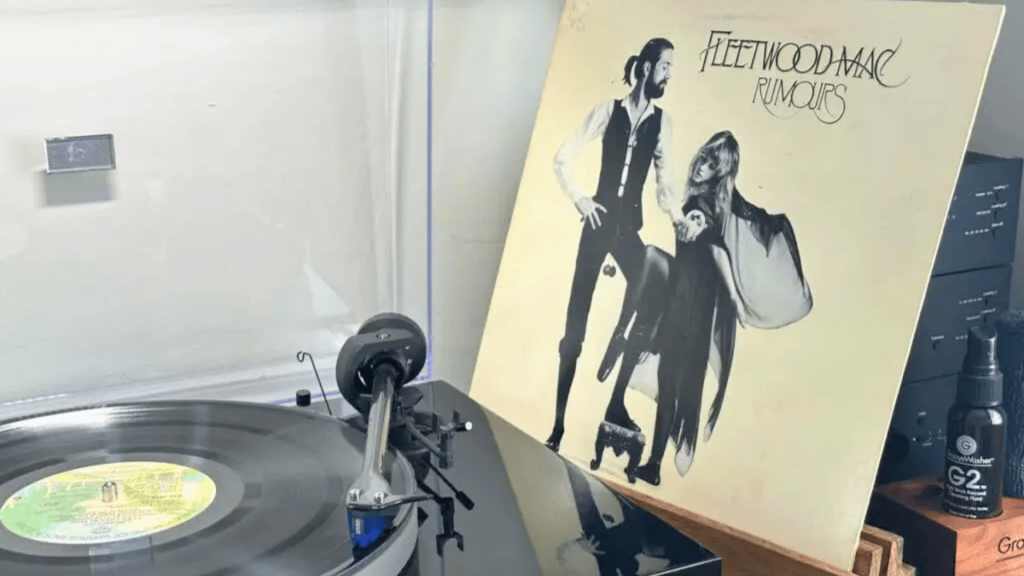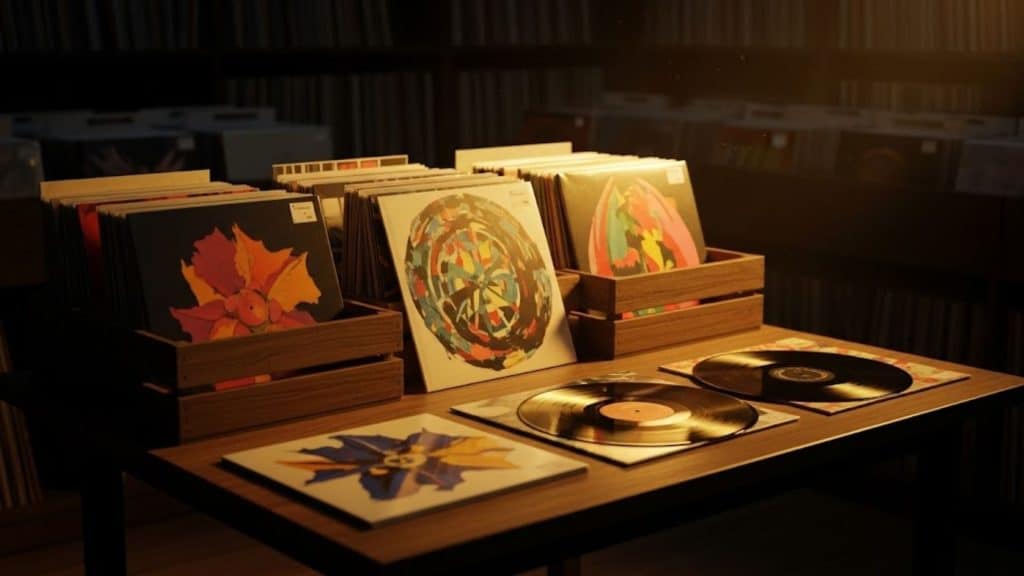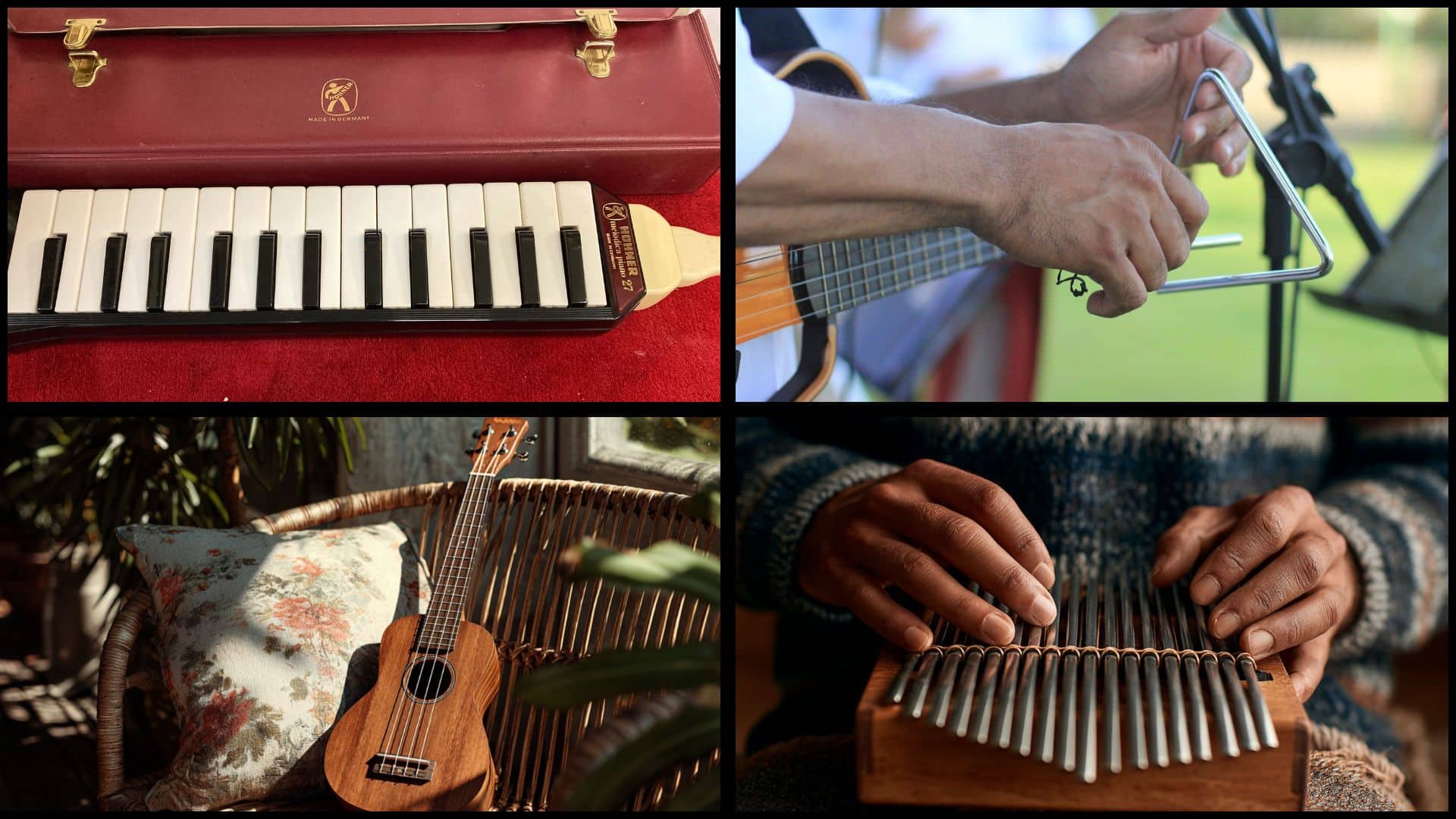Musical instruments with strings are found in many styles of music, from classical to folk. In this guide, I’ll explain what makes them unique, how they’ve developed over time, and how they fit into different traditions.
You’ll see examples of common, traditional, and rare string instruments, along with tips for choosing one that suits your needs. If you’re just curious or starting to learn, this overview will give you a clear starting point.
To begin, let’s look at what makes string instruments stand out from the rest.
What Makes String Instruments Unique
String instruments stand out because of the way they produce rich, natural sound. At the core is vibration; when a string moves, it creates sound waves that travel through the air.
This gives these instruments a warm, organic tone that can be soft, sharp, smooth, or resonant, depending on the build and setting.
Most string instruments are acoustic, meaning they don’t need electronics to be heard. The soundboard or body of the instrument helps amplify the vibrations. This makes even a single note ring out clearly in the right space.
String instruments have been around for thousands of years. From ancient lyres in Mesopotamia to the violins of Renaissance Europe, they’ve shaped nearly every culture’s music. Over time, they’ve evolved to fit classical, folk, jazz, and modern genres.
What truly sets them apart is their range of emotions. Whether it’s the pluck of a ukulele or the deep pull of a cello, string instruments offer color, expression, and flexibility that few others match.
Fun Fact: The oldest known string instrument, the lyre, dates to 2500 BCE in Mesopotamia. Made of wood with gut strings, it was found in royal tombs and decorated with gold, lapis lazuli, and a bull’s head carving.
Complete List of Musical Instruments with Strings
Let’s take a look at string instruments from around the world. Some are well-known, while others are traditional or rarely seen. Each one brings a unique sound and style to music.
Popular Worldwide
These instruments are commonly played across many genres and cultures, making them familiar to most musicians.
1. Guitar
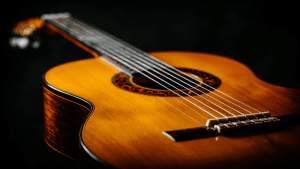
The guitar is one of the most widely played instruments in the world. With six strings and multiple variations, it works well for rhythm or melody. It’s used in nearly every genre, from rock and pop to classical and blues.
Famous Songs: “Stairway to Heaven” by Led Zeppelin, “Hotel California” by The Eagles
Famous Artists: Jimi Hendrix, Eric Clapton
2. Harp
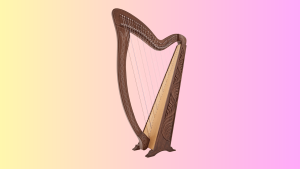
The harp has a large triangular frame and dozens of strings that are plucked by hand. It creates a soft, flowing sound that feels almost magical. You’ll often hear it in classical music, soundtracks, and traditional folk songs.
Famous Songs: “Baroque Flamenco” by Deborah Henson-Conant, “The Butterfly” by Máire Ní Chathasaigh
Famous Artists: Mairead Nesbitt, Andreas Vollenweider
3. Violin
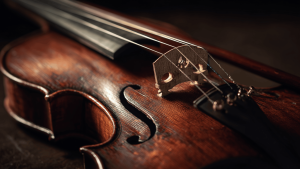
The violin is a high-pitched, four-stringed instrument played with a bow. It’s a key part of orchestras but is also used in jazz, folk, and film music. Its voice-like tone lets it stand out in solos or blend into a group.
Famous Songs: “Meditation” by Massenet, “Violin Concerto in D” by Beethoven
Famous Artists: Itzhak Perlman, Niccolò Paganini
4. Cello
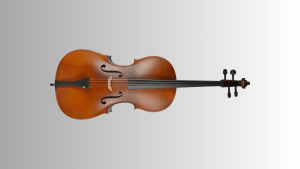
The cello is larger than a violin and sits upright between the player’s knees. It produces deep, rich notes that can sound both powerful and emotional. It’s used in orchestras, string quartets, and even rock ballads.
Famous Songs: “Cello Suite No. 1” by Bach, “Elgar’s Cello Concerto” by Elgar
Famous Artists: Yo-Yo Ma, Jacqueline du Pré
5. Banjo
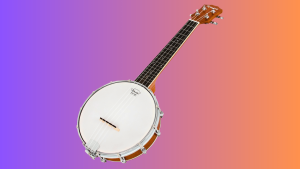
The banjo has a drum-like body and a bright, twangy sound. It’s a favorite in bluegrass and country music. Fast fingerpicking and rhythmic rolls make it stand out in jam sessions and stage performances.
Famous Songs: “Dueling Banjos” from Deliverance, “Foggy Mountain Breakdown” by Flatt & Scruggs
Famous Artists: Earl Scruggs, Béla Fleck
6. Double Bass
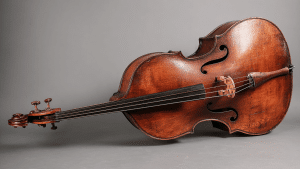
The double bass is the biggest and lowest-pitched string instrument. It’s often used to hold down the rhythm in jazz and classical groups. Played standing up or seated on a stool, it can be bowed or plucked.
Famous Songs: “So What” by Miles Davis, “Come Fly with Me” by Frank Sinatra
Famous Artists: Ray Brown, Christian McBride
7. Bass Guitar
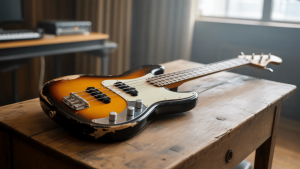
The bass guitar plays the low-end groove in most modern music. It usually has four strings and is played with fingers or a pick. It lays down the foundation for funk, rock, jazz, and pop bands.
Famous Songs: “Another One Bites the Dust” by Queen, “Billie Jean” by Michael Jackson
Famous Artists: Jaco Pastorius, Paul McCartney
8. Classical Guitar
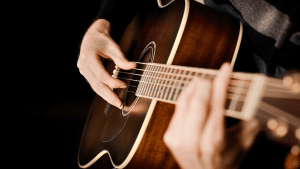
The classical guitar has nylon strings and a soft, mellow tone. It’s often used for solo performances in classical and Latin music. Players use the fingerstyle technique to pick out notes and chords with precision.
Famous Songs: “Recuerdos de la Alhambra” by Tárrega, “Concierto de Aranjuez” by Rodrigo
Famous Artists: Andrés Segovia, John Williams
9. Fiddle
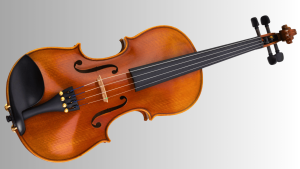
The fiddle is the same instrument as a violin but played in a folk or country style. It’s upbeat, quick, and rhythmic. Fiddlers use techniques like slides and double stops to create lively dance tunes.
Famous Songs: “The Devil Went Down to Georgia” by The Charlie Daniels Band, “Orange Blossom Special” by Ervin Rouse
Famous Artists: Mark O’Connor, Vassar Clements
10. Mandolin
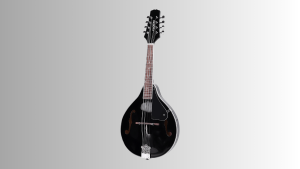
The mandolin is a small, stringed instrument with a bright, percussive sound. It’s common in bluegrass, folk, and Celtic music. It’s played with a pick and features fast, tremolo-style picking.
Famous Songs: “Maggie May” by Rod Stewart, “Losing My Religion” by R.E.M.
Famous Artists: Chris Thile, David Grisman
11. Acoustic Guitar
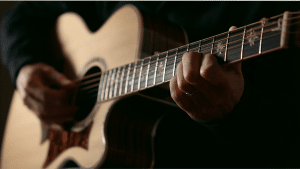
The acoustic guitar uses steel strings and produces a louder, brighter tone than classical models. It’s a go-to instrument for singers, songwriters, and folk performers. No amp is needed, just pick it up and play.
Famous Songs: “Wonderwall” by Oasis, “Blackbird” by The Beatles
Famous Artists: James Taylor, Neil Young
12. Ukulele
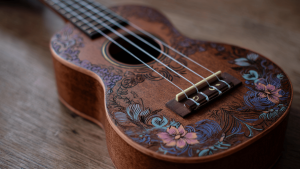
The ukulele is a small, four-stringed instrument from Hawaii. It’s light, cheerful, and easy to play. Great for beginners, it’s also used by professionals to create bright, melodic tunes across genres.
Famous Songs: “Over the Rainbow” by Israel Kamakawiwo’ole, “Riptide” by Vance Joy
Famous Artists: Jake Shimabukuro, Israel Kamakawiwo’ole
13. Piano
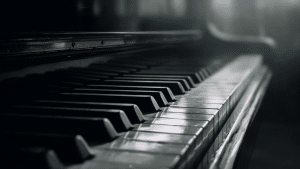
The piano is a keyboard instrument, but it’s also part of the string family because hammers strike its strings. It covers a huge range of notes and is used in almost every style of music.
Famous Songs: “Imagine” by John Lennon, “Arabesque No. 1″ by Claude Debussy (performed on harp)
Famous Artists: Ludwig van Beethoven, Freddie Mercury
Regional and Traditional
These instruments come from specific cultures or regions and are often used in traditional or folk music styles.
14. Appalachian Dulcimer
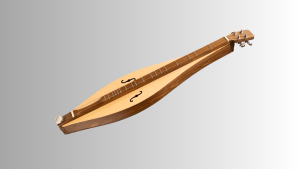
The Appalachian dulcimer is a fretted, plucked string instrument from the U.S. It has a gentle, droning tone and is usually played on the lap. It’s deeply tied to American folk traditions, especially in the Appalachian Mountains.
Famous Songs: “Shady Grove” by Doc Watson, “Simple Gifts” (Traditional)
Famous Artists: Jean Ritchie, David Schnaufer
15. Bouzouki
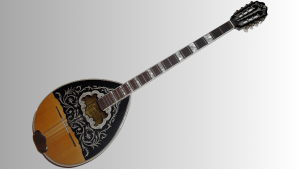
The bouzouki is a long-necked Greek string instrument known for its sharp, metallic tone. It’s central to Greek folk and popular music, especially rebetiko. Played with a pick, it adds rhythm and melody.
Famous Songs: “To Pelago Ine Vathi” by Giorgos Dalaras, “Zorba the Greek” by Mikis Theodorakis
Famous Artists: Manolis Chiotis, Giorgos Zampetas
16. Lute
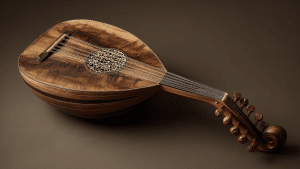
The lute is a pear-shaped instrument with a rounded back and many strings. Popular during the Renaissance and Baroque periods, it’s played by plucking. Its soft, melodic tone suited solo works and early ensemble music.
Famous Songs: “Lachrimae” by John Dowland, “Can She Excuse My Wrongs?” by John Dowland
Famous Artists: Julian Bream, Paul O’Dette
17. Biwa
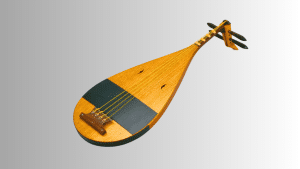
The biwa is a Japanese lute with four or five strings. Played with a large plectrum, it produces sharp, percussive tones. It’s often used in traditional storytelling and historical recitations in Japan.
Famous Songs: “Heike Monogatari” (Epic Chant), “Gion Shōja” (Opening Passage of the Tale of the Heike)
Famous Artists: Kinshi Tsuruta, Junko Ueda
18. Koto
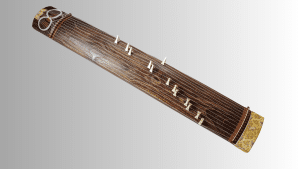
The koto is Japan’s national instrument. It has 13 strings stretched across a long wooden body. Played with finger picks, it creates a clear, resonant sound used in classical and modern Japanese music.
Famous Songs: “Rokudan no Shirabe” by Yatsuhashi Kengyō, “Midare” by Kengyō
Famous Artists: Michio Miyagi, Sawai Kazue
19. Lyre
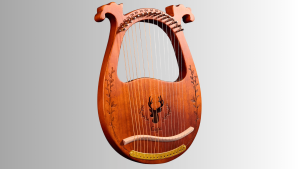
The lyre is an ancient string instrument once used in Greece, Mesopotamia, and Egypt. It has a small frame with open strings and is played by strumming or plucking. It’s closely tied to mythology and early poetry.
Famous Songs: “Hymn to Nemesis” (Ancient Greek), “Epitaph of Seikilos” (World’s oldest complete song)
Famous Artists: Michael Levy, Christodoulos Halaris
20. Viola
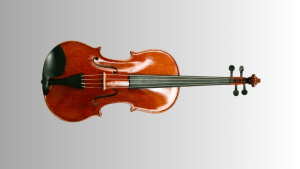
The viola looks like a larger violin and has a deeper, warmer tone. It’s an essential part of orchestras and string quartets, usually playing the inner harmonies. It’s played with a bow like the violin.
Famous Songs: “Harold in Italy” by Berlioz, “Sinfonia Concertante” by Mozart
Famous Artists: William Primrose, Tabea Zimmermann
Rare and Unusual
These instruments are less common and often have unique shapes, sounds, or playing techniques not seen in mainstream music.
21. Autoharp
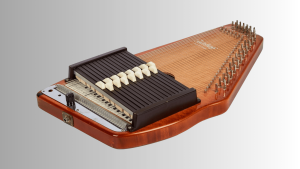
The autoharp is a chorded zither with a set of strings, played by strumming or pressing buttons to dampen certain strings. It creates a simple, harmonic sound and is often used in folk music.
Famous Songs: “The Sound of Silence” by Simon & Garfunkel (arranged for autoharp), “House of the Rising Sun” by The Animals
Famous Artists: Mother Maybelle Carter, Bryan Bowers
22. Musical Bow
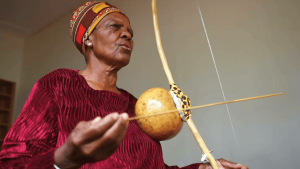
The musical bow is one of the oldest string instruments, played by drawing a bow across a single string. It’s often used in traditional African, Native American, and Asian music. Its sound is sharp and rhythmic.
Famous Songs: “Solo for Musical Bow” by The Baoule, “Chordophones: Musical Bow” by Unspecified
Famous Artists: Hugh Tracey, Charles Fox
23. Bowed Psaltery
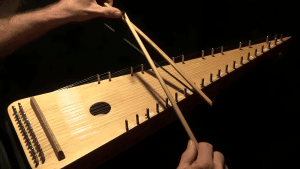
The bowed psaltery is a triangular instrument with multiple strings stretched across it. Played with a bow, it produces a bright, harmonious sound. It’s mostly used in folk music and some modern experimental genres.
Famous Songs: “Setervise” by Aryeh Frankfurter, “Psaltery – Hymn to St. Magnus (Nobilis humilis)” by David Munrow
Famous Artists: David H. Bailey, Susi Wood
How Musical Instruments with Strings Are Played
String instruments are special because they can be played in different ways. You can bow, pluck, or strike the strings, and each method creates a unique sound. Let’s look at the most common techniques.
Bowing
Bowing involves drawing a bow across the strings, causing them to vibrate and produce a smooth, continuous sound.
This technique is mostly used with orchestral instruments like the violin, cello, and double bass.
The bow is typically made from horsehair, and the pressure you apply changes the tone, allowing for dynamic variation.
- Sound Variation: Bowing creates a rich, sustained sound that can be soft or loud depending on the force applied. It also allows for expressive techniques like vibrato or sliding between notes.
- Technique Comparison: Bowing allows for more control over the sound and is ideal for long, flowing passages in classical music.
Bowing is the go-to technique for sustained, dynamic sounds in orchestral settings.
Strumming
Strumming is used mainly with guitars, banjos, and other plucked string instruments. You move your hand across the strings quickly, creating rhythmic patterns that provide harmony and texture.
Strumming is often heard in popular rock and folk music.
- Sound Variation: Strumming produces a fuller, louder sound compared to plucking. It’s often used to emphasize rhythm and support vocals or melodies.
- Technique Comparison: Strumming is quicker and more percussive than plucking, and it can be used to create energy in a song.
Strumming is perfect for rhythm-heavy songs and creating a strong background for melodies.
Plucking
Plucking involves using your fingers or a pick to pull a string, causing it to vibrate. This technique is common in guitars, mandolins, ukuleles, and many traditional instruments.
Plucking can create both sharp, clean notes and more fluid sounds.
- Sound Variation: Plucking allows for a cleaner, more defined sound compared to strumming. It can be soft and delicate or bright and sharp, depending on how the strings are plucked.
- Technique Comparison: Plucking is more precise than strumming and is great for playing individual melodies or complex arpeggios.
Plucking offers precision and clarity, making it ideal for complex melodies or solos.
Hammering
Hammering, used primarily in instruments like the piano and hammered dulcimer, involves striking the strings with a hammer. This technique makes the strings vibrate and produce sound without a bow or pick.
- Sound Variation: Hammering creates a sharp, percussive sound. It’s used to produce fast rhythms or emphasize particular notes.
- Technique Comparison: Unlike plucking or strumming, hammering produces a more forceful sound. It’s ideal for rhythmic music or when playing fast, repeating notes.
Hammering produces a powerful, percussive tone that emphasizes rhythm and speed.
Playing techniques on string instruments affect the sound and expressiveness, giving musicians the ability to create different musical styles.
Choosing the Right String Instrument
Not every string instrument is right for every player. Your age, skill level, and music style all play a part in picking the best fit.
| Player Type | Best Choices | Why It Works |
|---|---|---|
| Kids | Violin (small sizes), Ukulele, Cello (½ or ¾) | Small, light, and easy to hold. The ukulele has only four strings; it’s great for beginners. |
| Beginners | Acoustic Guitar, Ukulele, Violin | Easy to find lessons and tutorials. Simple to start, with fast learning progress. |
| Orchestral Players | Violin, Viola, Cello, Double Bass | The core of most orchestras. Fits into classical music with strong teacher support. |
| Folk Musicians | Banjo, Mandolin, Fiddle, Acoustic Guitar | Common in folk and bluegrass. Bright tones, portable, and great for rhythm. |
No matter your background or style, there’s a string instrument that can match your goals and grow with your skills.
Wrapping Up
I’ve learned that musical instruments with strings all have their own sound, purpose, and story.
Now that you’ve seen how they work and what makes them different, it’s easier to find one that fits your interests. I walked you through common types, rare finds, and key tips to help you decide.
Knowing the basics really helps when you’re picking up a new skill, helping someone else, or just satisfying your curiosity.
If you’re ready to learn more, I’ve got other posts on the website with simple tips, clear examples, and real insights on musical instruments. Don’t forget to check them out!

